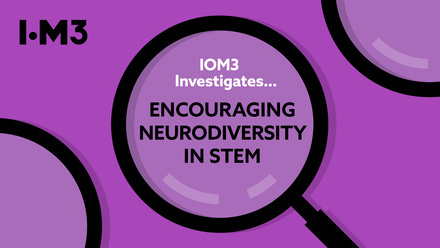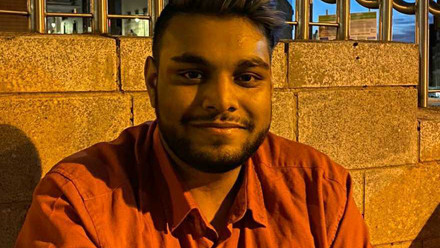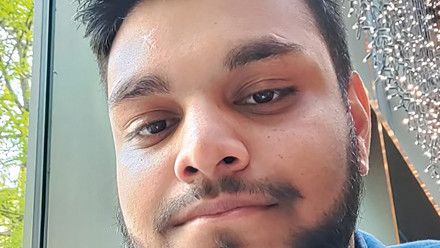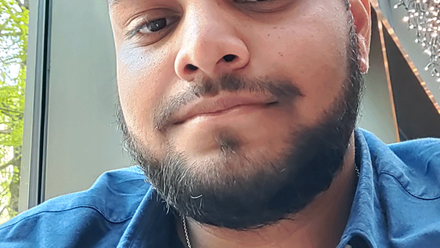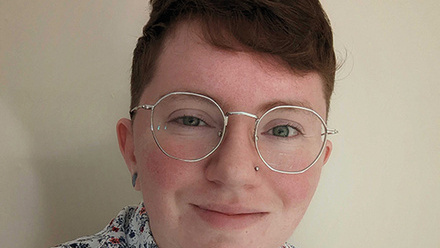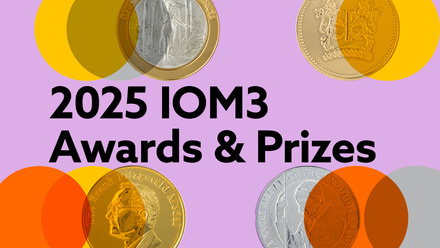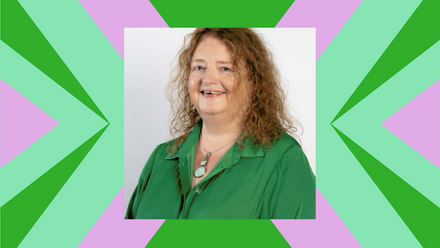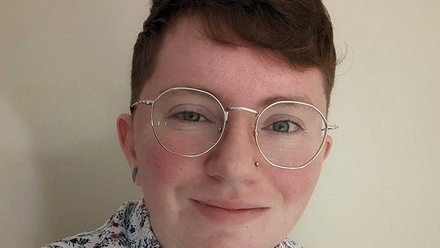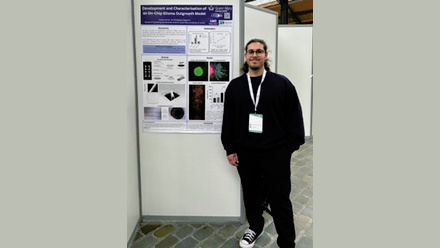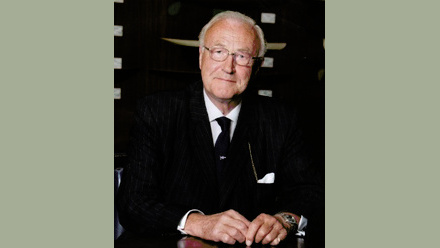Engineering, neurodivergence and gender
A personal perspective on engineering, neurodivergence and gender.
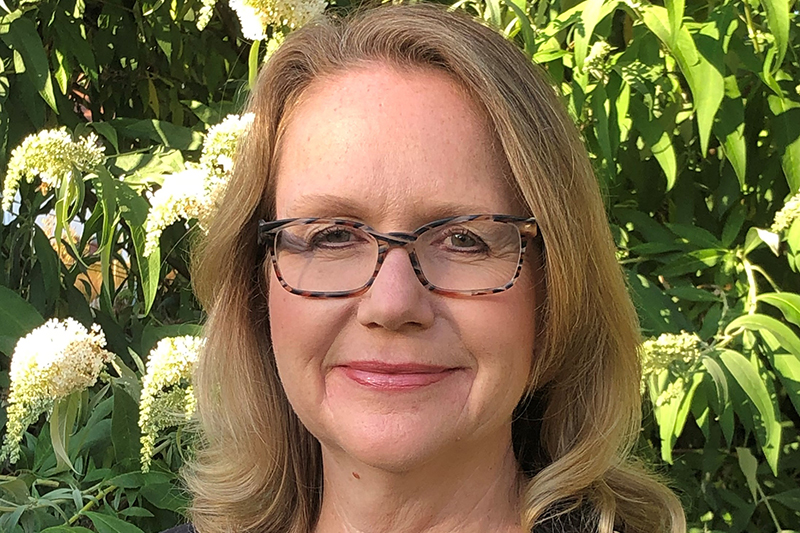
I am writing this on the first day of the school year feeling both optimism and trepidation. My youngest child is repeating Year 11 after a difficult few years.
My youngest child was born a girl in 2008 (now uses the pronouns he/they). In 2011, he was assessed for autism because they were non-verbal and had some behavioural challenges. I was asked what jobs both parents did (both are engineers). I was told this was a risk factor for autism.
Simon Baron-Cohen, a Professor of Developmental Psycho-pathology at the University of Cambridge, UK, and a specialist in the study of autism and those working in STEM, notes that engineers are twice as likely as others to have autistic children.
In general, the relatives of autistic people also tend to score above average on tests of autistic traits, and Baron-Cohen found that engineers themselves are more likely to exhibit autistic traits than any other profession.
Autism can leave individuals isolated – physically able to learn or work but unable to access them. Approximately 1% of the UK population has a diagnosis of autism, which equates to about 700,000 people. The actual number may be much higher, as individuals often go undiagnosed. In 2015, only 15% of autistic adults were in full-time employment in the UK, reported the National Autistic Society (NAS). This compares to 43% of adults with disabilities in general.
Unmasking
Why are so many people working in STEM autistic and/or their children autistic?
Baron-Cohen proposes that now there is greater representation of women in STEM, this increases the likelihood that people of like minds will marry and have children. That, in turn, increases the likelihood of having a child with a ‘systems-thinking brain’, the most extreme of which presents as autism.
Back to my child. In the assessment, I was asked if any of my other children were very bright. I answered yes, big sister was clever. Again, I was told this was a risk factor for autism. Autistic people often excel in certain areas of life and sometimes have IQs commensurate with genius. Dr Temple Grandin is a contemporary female example.
Dr Grandin herself did not talk until she was three-and-a-half years old. As a child, she needed to be taught how to wait and take turns when playing board games. She was teased and bullied in high school. The only place she made friends was while doing activities where people shared her interests.
Grandin went on to become a famous author and speaker on autism and animal behaviour. Today, she is a Professor of Animal Science at Colorado State University, USA, and half the cattle in the US are handled in facilities she has designed.
The assessment determined that our toddler did not meet the threshold for autism. Six months of speech therapy later, my child was speaking in full sentences and seemed much happier.
On starting school, it was clear that they were extremely bright. At parent-teacher meetings, I was told that they were a very able, engaged child, but that they talked too much – ironic, given his challenges around speaking as a toddler!
Fast forward to 2020. My child had started secondary (high) school the previous September. COVID-19 struck and we all went into lockdown. That is when I started to notice that everything was not OK for my youngest.
He went from being a lively, inquisitive, chatty 12-year-old to becoming withdrawn. They lost interest in school, hobbies, his beloved pet dog. I thought their behaviour was due to the pandemic restrictions. I sought support via the health services as I was worried.
It was around that time that he told me that he did not identify as female and wanted to change their name. The health professionals thought he was depressed. My child was sure they were not depressed. I did not know what to think.
The NAS explains how the presentation of autism in women and girls may differ from those of other autistic people. They may appear to have fewer social difficulties than autistic men and boys, but this could be because they are more likely to ‘mask’ their autistic traits, though the stress of doing so can result in anxiety, overwhelm and burnout.
They may also be missed if their academic achievement masks difficulties they are facing in other areas.
‘Masking’ is the conscious or unconscious adjustment and suppression of natural tendencies to ‘fit in’ with social and cultural expectations. Techniques used include forcing yourself to make eye contact, imitating body language, rehearsing conversations, suppressing traits such as stimming and more. Many autistic individuals perceive masking as an essential, lifelong skill to be accepted in a neurotypical world.
Anecdotal information indicates that around puberty ‘differences’ in autistic females often become apparent. This describes my child really well – lots of friends, academically capable, well-behaved in school – then things started going obviously wrong around the age of 12.
This means women and girls may be misdiagnosed with mental health issues, or their autistic traits may be missed amid the symptoms of co-occurring conditions. Again, this describes my child’s experience. My child and I have largely had to educate ourselves so that we could challenge professionals to get the care needed.
COVID-19 restrictions lifted, and life went back to some sort of normality, but my child was still really struggling. He went from loving school to not being able to do homework and not wanting to go to school. The school’s special educational needs teacher did not think my child showed autistic traits. We waited for more than a year to be assessed for autism privately, via the NAS. In July 2022, my child was diagnosed with autism, aged 14. He was delighted – they had an explanation for why he was ‘different’.
Throughout the next school year, my child continued to struggle accessing education. He was falling behind in class, and self-esteem was dropping.
In 2023, I asked the school again if they thought my child might have Attention Deficit Hyperactivity Disorder (ADHD) too. I was told no. Once again, I arranged a private assessment with a psychiatrist. My child was diagnosed with ADHD in October 2023, aged 15. ADHD and autism often occur together.
The result of my child’s challenges to access education was that he dropped from taking 10 subjects at GCSE (predicted top grades) to taking two GCSEs in 2024. I am delighted to say that he passed both with high grades, which is amazing and proof of resilience and academic capability. He is determined to succeed and is taking some more GCSEs, aiming to do A-levels and go to university.
In hindsight, I can see that my child was experiencing progressive autistic burnout (AB). The Autism Research Institute describes this as a 'highly debilitating condition' characterised by withdrawal, exhaustion, executive function problems and increased manifestation of autistic traits. AB results from the accumulation of stressors and challenges that many autistic people experience just by living.
I read an analogy of what may lead to AB, which I find evocative. It describes how driving in the summer may result in squashed bugs on your windscreen. A few bugs are not a problem, but if you are travelling a long distance, more and more bugs may accumulate until you can no longer see through the windscreen and it is no longer safe to drive. You have to pull over and clean the windscreen before continuing.
This is what it is like for many autistic people – the bugs (stressors and the effort of masking) build up until the individual can no longer carry on. I now know when my child is experiencing AB because he becomes quiet, tired and stays in his bedroom with the door shut and the window blind closed.
Consequences of masking can include physical and mental exhaustion, threats to self-perception, increased mental health difficulties, self-injurious behaviour, AB and suicidal behaviours, as cited by the Autism Research Institute.
I see the cost of masking for my child on an almost daily basis. Attending school requires him to mask, resulting in absolute exhaustion and inability to perform basic tasks of self-care.
Gender balance
So why did it take so long for my child’s challenges to be recognised and diagnosed as neurodivergent?
My view is that it was due to their sex being female and being assigned female at birth (AFAB). Recent data from the NAS indicates that the ratio of diagnoses in female to male is 1:3.
Research reported by the Autism Research Institute states that autistic women and female-presenting people with a diagnosis only received one after a series of mental health misdiagnoses, which was not the case for autistic men.
Doctors and healthcare professionals are also far more likely to diagnose mental health issues in females as stand-alone conditions rather than co-occurring with autism. The average delay in receiving an autism diagnosis from the first time they present to mental health services for women is 10 years.
The Autism Research Institute highlights how this is especially true for those who exhibit more nuanced autistic traits and do not have intellectual disabilities, such as my child.
While research by Professor Will Mandy et al at University College London, UK, reveals that late diagnosis, defined as being diagnosed after starting primary education, can lead to severe long-term consequences, especially for females.
Many undiagnosed individuals struggle with self-understanding and acceptance, and experience increases in mental health issues. This, in turn, increases the likelihood that they will be misdiagnosed, creating a vicious cycle of misdiagnosis and poor mental health.
Often misdiagnosed individuals are prescribed medications that can change aspects of their emotional, mental and physical state.
Common misdiagnoses include conditions that can have similarities to autism, such as Emotionally Unstable Personality Disorder (EUPD), Borderline Personality Disorder (BPD), ADHD, depression, anxiety and schizophrenia. My child was prescribed antidepressants, which made his mood more self-destructive.
A recent study by Belcher et al, cited by the Autism Research Institute, on misdiagnosis in autistic women, found that 15% of patients attending a clinic for BPD satisfied the criteria for an autism diagnosis. Although these conditions present similarly to autism (e.g. self-harm, emotion regulation issues, impulsivity), the accepted wisdom is that females are more likely to suffer mental health issues than be autistic.
And without the understanding and support from friends, family and health professionals that may accompany a diagnosis, autistic females often experience victimisation, which leads to increased mental health difficulties, and thus continues the cycle of missed/misdiagnosis, finds Jordan et al., 2010, as cited by the Autism Research Institute.
A study from Sweden on Sex differences in mental health in young autistic adults analysed data collected from 1.3 million people born in Sweden between 1985 and 1997. The researchers found that, by the age of 25, more than 60% of women with Autism Spectrum Disorder (ASD) and approximately 45% of men with ASD had been diagnosed with a psychiatric condition, compared to 14% of non-autistic women and 9% of non-autistic men.
In addition, more than 22% of women with ASD had been hospitalised for a psychiatric condition by the age of 25, a number five times greater than that for women without ASD and nearly double that for men with ASD.
Other research shows that autistic women and female-presenting people are at more than eight times the risk of suicide compared to non-autistic women, whereas autistic men are at less than twice the risk (Kirby et al., 2019; Kõlves et al., 2021), cited by Autism Research Institute.
Recent studies also reveal an association between the length of time spent masking and adverse mental health outcomes.
There is a generally accepted view that autistic females mask more than males, due to societal norms of females being expected to be more compliant and sociable than males. This may account for, in part, why more autistic females than males are at greater risk of engaging in self-harming behaviours.
In contrast, social acceptance and receiving a diagnosis are reasons autistic adults feel less need to mask.
Identity
Where does my child’s gender identity fit into the experience of AFAB autistic people? Gender identity and biological sex are different things. People are typically assigned a sex at birth according to their genitalia – male (sex: male, gender: assigned male at birth) or female (sex: female, gender: AFAB).
Non-autistic and autistic people, like my child, may experience discomfort or distress when their assigned sex is different from the gender they identify with, which may be different from the gender they were assigned at birth – this is known as gender dysphoria (GD).
In the past, theories exaggerated the idea of a ‘male’ presentation of autism. Against the backdrop of a strictly binary and gender-defined society, these theories were reinforced by cultural norms and traditions. However, more recent research shows that autistic-lived experiences are very different to the classical binary understanding of gender.
A study which explored the intersection of autism and gender found themes that related to how the generally perceived understanding of autism restricts gender identities, how gendered autistic identities are considered as less acceptable ways of being (Moore et al., 2022, cited in Autism Research Institute, 2023).
The Autism Research Institute reports that autistic females present with greater gender and sexuality diversity compared to non-autistic females, and many report conflicts between autism and the traditional feminine identity.
Research also indicates this relationship is bidirectional, where the rate of autism in transgender individuals is between 6-26% compared to a 1.85% prevalence in the general population (Thrower et al., 2020; Maenner et al., 2020; Walsh et al., 2018, cited in Autism Research, 2023).
Autistic women and men sometimes display the ‘typical’ brain of the other sex (Sedgewick et al., 2021 cited in Autism Research Institute, 2023). So, while an autism diagnosis may offer freedom from societal expectation – more acceptance of being different rather than difficult – it can often restrict gender identity and reinforce classical hierarchies.
Unfortunately, poor mental health and suicidal thoughts are common experiences for individuals with GD and, as previously stated, are more prevalent among AFAB autistic people.
A comprehensive 2022 review (Pinto et al., cited in Autism Research Institute, 2023) revealed that autistic people with GD exhibit increased rates of depressive symptoms (64%), suicidality (42.9%), substance use disorders (40.2%), anxiety (25.9%) and general distress (33.8%) compared to the general population.
The review also highlighted that individuals with GD encounter more social stressors and face higher levels of discrimination, contributing to worsening psychiatric conditions.
Additionally, research has shown that autistic LGBTQIA+ individuals experience significantly higher rates of mental illness, physical health challenges and unmet healthcare needs compared to cisgender (gender identity matches sex assigned at birth) autistic people (Hall et al., 2020, cited in Autism Research Institute, 2023).
Other drivers of poor mental health and suicidal ideation for autistic LGBTQIA+ people include gender-based victimisation, bullying, violence, harassment, and rejection by family, friends and community (Virupaksha et al., 2016; Hall et al., 2020 cited in Autism Research Institute, 2023).
So, the intersectionality between being AFAB, LGBTQIA+ and autistic significantly increases the risk of autism misdiagnosis and mental health issues. It is fair to say they are a very high-risk group with respect to self-harm and suicidal ideation.
There are protective factors that can be brought in to play to reduce the risk. Research indicates that transgender (trans) individuals with high self-esteem, assertiveness and perceived social support from loved ones demonstrate greater resilience to psychiatric conditions than their counterparts (Hall et al., 2020, Autism Research Institute, 2023).
Further, a growing body of evidence reveals that trans-autistic individuals experience significant improvement in mental health and a reduction in suicidal ideation when they received gender-affirming care (Cooper et al., 2023; Dhejne et al., 2016; Virupaksha et al., 2016, cited in Autism Research Institute, 2023).
These improvements can be attributed to more acceptance or comfort with one’s body, and the validation and hope that accompany acceptance and treatment (Dhejne et al., 2016, cited in Autism Research Institute, 2023).
Given the mounting evidence supporting the link between GD and autism, I hope that future research will include and investigate the long-term outcomes of gender-affirming care and the lived experiences of autistic people with GD.
In my child’s experience, practitioners tend to ignore both autism and his gender identity, focusing instead on his presentation of poor mental health, which likely emanates from autism and gender identity. A holistic approach to supporting autistic people is sorely needed.
Rethinking recruitment
There is some good news. In 2019, the BBC ran a piece about a company where 75% of the staff are autistic.
Rajesh Anandan founded his company Ultranauts with his MIT roommate to demonstrate that neurodivergence could provide a competitive business advantage and underpin a successful company. In the same year, the pair created the world’s first, fully remote, inclusive workplace for cognitively diverse teams.
The quality engineering start-up is one of an increasing number of firms focusing on autistic talent recruitment and retention.
However, the barriers to employment for autistic people can still be enormous.
The NAS is quoted as stating, 'Job descriptions can often have core tick-box behaviours, and can be quite general, forms look for ‘team players’ and ‘staff with great communication skills’ but lack specific information'.
This, plus interview questions such as 'what do you see yourself doing in five years?' can be too vague for people with autism, as many find such questions particularly hard to navigate. Assessing candidates heavily on communication skills means neurodivergent people can feel and be excluded.
Additionally, people may not feel comfortable disclosing their disability at work or at interview. Many autistic people have sensory needs resulting in feeling stressed by open-plan workplaces, where they may feel forced to interact with colleagues or may struggle with workplace noise, lighting or temperature. These aspects of the autistic experience can lead to masking and AB.
Ultranauts’ recruitment process has no interview and applicants do not require relevant experience of specific technical skills. Instead of using CVs and interviews, candidates undergo a basic competency assessment in which they are measured against 25 desirable attributes for software testers, such as the ability to learn new systems or take on feedback. Following these initial tests, potential staff spend a week working from home, fully paid.
They are also offered the option to work on a a desired-time equivalent (DTE) timetable, meaning they take on as many hours as they feel comfortable managing, rather than being tied into full-time work.
'As a result, we have a talent-screening process to take someone who has never done this job and, at the end of that process, have a 95% degree of confidence…whether people would be great at this,' says Anandan. This alternative recruitment process may benefit many businesses.
A study by Harvard University, USA, demonstrates that embracing and maximising the talents of people who think differently can have huge benefits for a business. Having a neurodivergent workforce has been shown to improve innovation and problem solving, because people see, understand information and make decisions in a range of different ways.
My child is a wonderful young person who is bright, engaging and capable, who is making a positive contribution to the world. He also happens to be AFAB and has autism and ADHD. As such, he has been misunderstood from birth. My wish is that girls, women and non-binary people (and all people) with autism get an early diagnosis and the support they need to flourish.
On her website, Grandin says, 'The skills that people with autism bring to the table should be nurtured for their benefit and society’s.' She also said if a cure for autism were found, she would choose to stay just the way she is. 'I like the really logical way that I think. I’m totally logical. In fact, it kind of blows my mind how irrational human beings are. If you totally get rid of autism, you’d have nobody to fix your computer in the future.'
On 23 January, Maria and her son attended an event at UK Parliament as ‘experts by experience’ to launch the NAS report on A constant fight, aimed at improving outcomes for autistic people.


